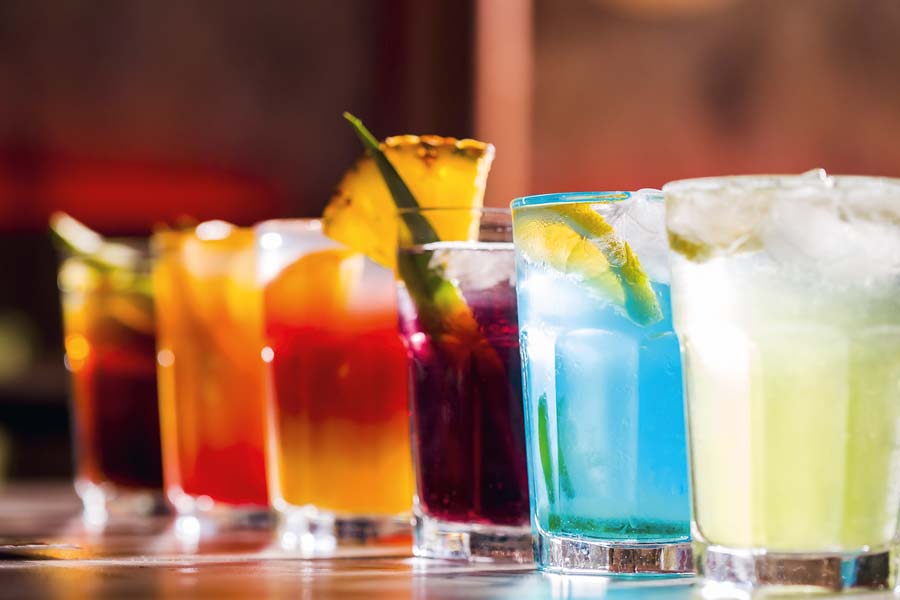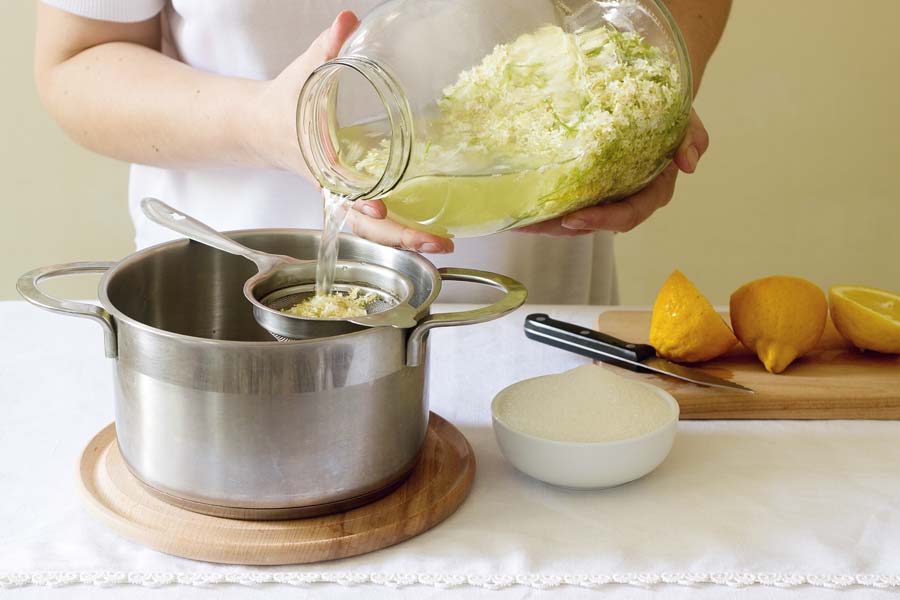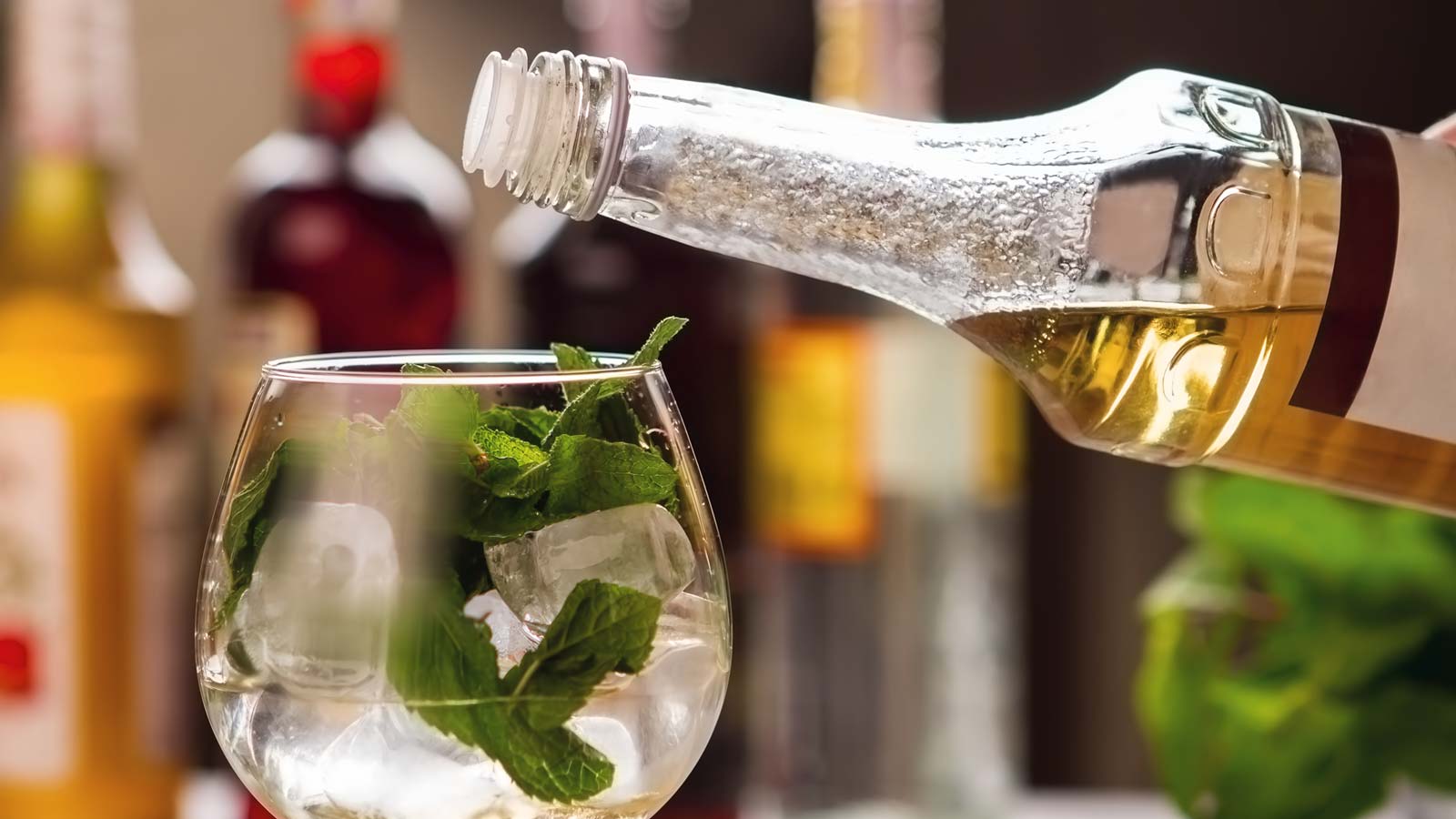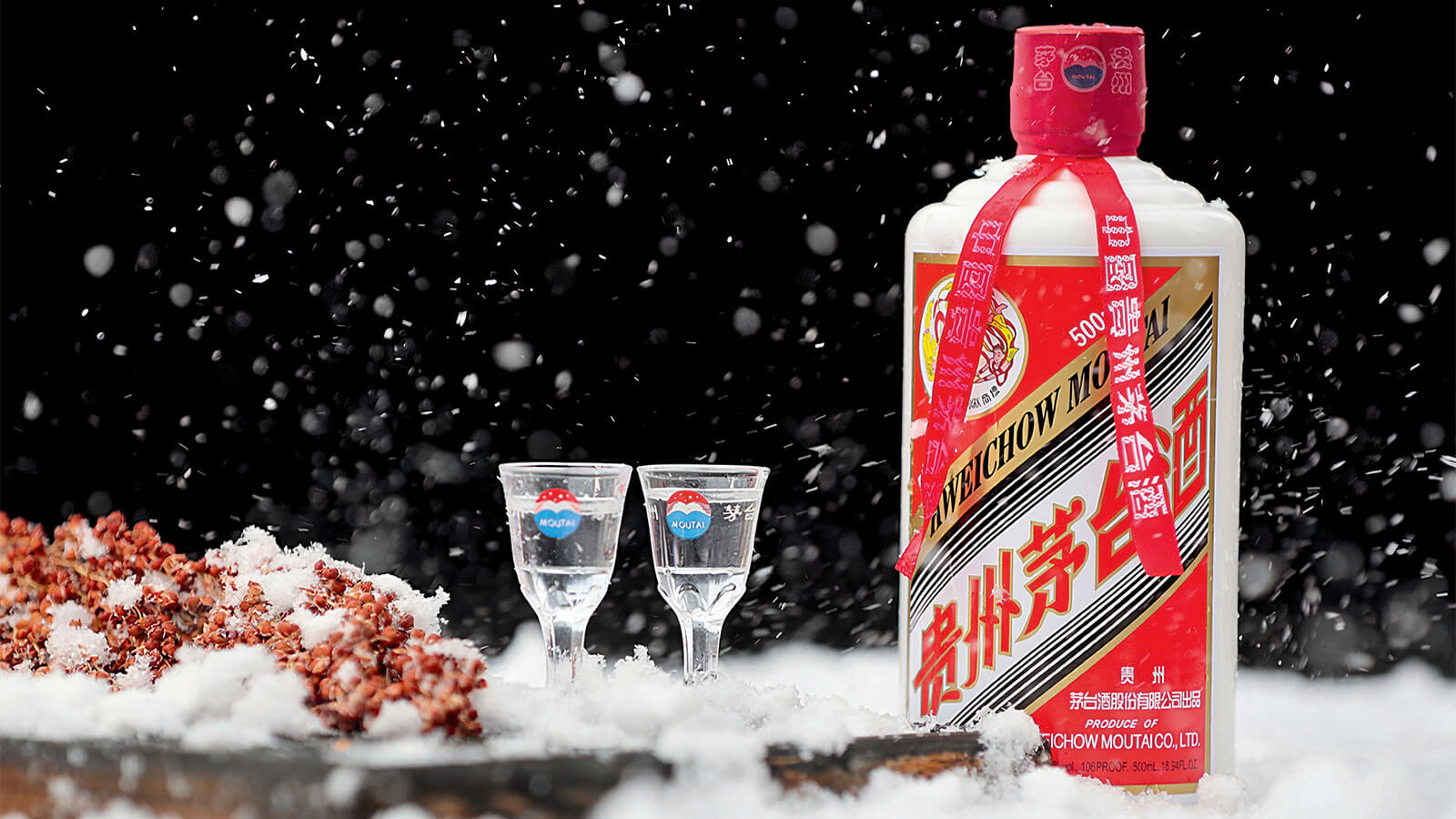Thanks to syrups, you can get the taste of strawberry, raspberry or melon in your glass, regardless of the season. At the same time, flavours such as amaretto, rum or bitter can be used to imitate classic cocktails with little or no alcohol. Do you like to experiment? Then it's time to try syrups with the taste of Black Forest cake, apple pie or tiramisú.
Every restaurant has a smaller or larger selection of syrups on the shelf. Some syrups are placed near the coffee machine for guests who want to sweeten their latte macchiato with caramel, hazelnut and amaretto syrup. If the business is open for the day, children drink raspberry syrup.
For cocktails, sugar, orgeat and grenadine syrup are available in the speed rack and, since the Hugo, probably also elderflower syrup. If you don't mind the time and effort, you can mix your own special creations with homemade syrup. Almost every cocktail has a certain sweetness. Whether this comes from a liqueur, a sweet vermouth, sugar cubes or syrup plays a subordinate role in this sense.
The sweetness serves to create a balance between the acidity and the alcohol. Sugar also gives a drink a pleasant mouthfeel. But as with everything, it is a question of dosage; too much sugar makes any drink undrinkable.
Sugar or sugar syrup?
Is it better to use sugar or sugar syrup for a drink? Not such a simple question, and one that every bar can ask itself again for almost every drink. Sugar syrup has the clear advantage that it can be used cleanly, quickly and precisely. The sugar is already dissolved, so the drink doesn't need to be shaken or stirred as much.
Sugar syrup also adds an additional amount of liquid to a drink - the drink becomes longer. Tiki and fancy drinks with many different ingredients are usually mixed with syrup, as are carbonated drinks. There are, however, various exceptions - for example, the Mojito or Champagne cocktail.
It goes without saying that the sugar must first be dissolved with the ingredients that do not contain carbon dioxide. It gets a little more complicated with the sours - here opinions differ. If you want to emphasise the taste of the sugar in the drink, it is preferable to mix with raw sugar from sugar cane.
"Chemistry is honourable, but nature understands the matter better."
Harry Schraemli
But whether syrup or sugar. With sours, one usually first discusses the quality of the spirit and the lemon juice as well as their quantity ratio to the sweetness, secondly the protein (yes or no?) and only then the question of sugar vs. sugar syrup. If the result is to be a clear cocktail, the use of sugar syrup is preferable. If, on the other hand, the clarity of the drink is not important, such as when mixing with aged spirits, cane sugar can also be used.
If you want extra mouthfeel in your cocktail, go for gum (French: gomme) syrup. This sugar syrup has a higher sugar to water ratio (2:1) and gum arabic. This is a gum obtained from various acacia species. Many commercially available gomme syrups are also flavoured with a little orange blossom water.
And while we're on the subject of mouthfeel - a few undissolved grains of sugar with every sip of mojito or caipirinha is simply part of the experience for many.
Clear the stage for syrups
But in order to do justice to syrup and its importance in the bar, one must not limit oneself to its influence on sweetness and mouthfeel. A syrup has the power to significantly shape the flavour profile of a drink.
Grenadine and almond syrup (orgeat) in particular have played their part in the popularity of so-called tiki drinks. Whereas at the beginning of the new millennium elderflower and hazelnut were still described as "fancy flavours", today people might raise their eyebrows at flavours like apple pie, popcorn or cucumber.

Looking through old bar books, it is indeed noticeable that reaching for syrups with unusual flavours has only been practised regularly for a few decades. Today, Barkeeper does not shy away from spending a lot of time in the kitchen to make homemade syrups. However, very few people can do without syrups from professional producers.
"No one appreciates syrups more than children... and Barkeeper."
When it comes to syrups, it is worth making a conscious decision about quality. The fruit content can vary greatly from variety to variety and producer to producer. For herbal or spice syrups, the flavours are also obtained through extractions.
If you miss the pomegranate in your grenadine (French: grenade), you will also find pomegranate syrup at most of the big producers. Orgeat, the almond syrup that should not be missing from any Mai Tai, was formerly made with barley (French: orge) in addition to almonds. Today, many producers of orgeat syrup do not use barley in their production.
Fruit syrups are made from fruit juice, fruit juice concentrates or natural or artificial flavours. Some producers, such as Morand, also offer syrups with organic ingredients. What applies to liqueurs also applies to syrups: the eye also drinks. One bar spoon and a cocktail glows in every colour of the spectrum.
Thanks to syrup, the simple mixture of tequila and orange juice becomes Tequila Sunrise - an eye-catcher after all. Some flavours even come in different colours. Flavours such as Curaçao Triple Sec or mint are available in clear, blue or green bottles.
Sweetness in drinks: More options
Sugar and syrups are the most reliable sources of sweetness behind the bar, but by no means the only ones, as the following non-exhaustive compilation shows:
Maple syrup is most often seen in cocktails in combination with bourbon or rye whiskey. The sweet, thickened sap of the maple is produced mainly in Canada and the north-eastern USA. There it is used in traditional savoury and sweet dishes. The sweetening power of maple syrup is lower than that of sugar.
Not only tequila and mezcal are produced from agave, but also agave syrup. This easily soluble sweetener has a higher sweetening power than sugar and consists mostly of fructose.
The minimum sugar content of liqueurs is set by law. There is a minimum of 100 grams of sugar per litre (with some exceptions). For crème liqueurs, the minimum amount is 250 grams, for crème de cassis even 400 grams of sugar. Those who substitute rum, vodka, gin & co. with liqueurs in cocktails should be aware of this.
Liqueur and sweet wines have a comparably high sugar content as liqueurs. Both sherry and port were already regularly used in the bar in the century before last.

If you want to give a classic cocktail an exciting twist, replace the sugar or sugar syrup with honey. For mixing, it is advisable to dissolve an equal amount of honey in hot water, because liquid honey, and even more so, crystallised honey, can hardly be dissolved in cold liquids.
Of course, there are countless other ways to give your drink the necessary sweetness - with soft drinks or fruit juices , for example. Most of the fruit purees from the big producers have sugar and therefore have a longer shelf life. Fresh fruit purees, on the other hand, need to be refrigerated continuously and consumed quickly.
LimeJuice Cordial consists of lime juice, which thanks to sugar has a longer shelf life than freshly squeezed lime juice. A bottle of Roses's Lime Juice can still be found in almost every bar. In the past, Lime Juice Cordial reduced the risk of scurvy in sailors and boosted morale when mixed with gin as a gimlet.
Shrubs use vinegar and sugar to extend the shelf life of fruit. Shrubs add both sweetness and acidity to a cocktail, in addition to the aroma of the fruits and spices used.
Unlike shrubs, jams have a less long tradition in drinks, but are still suitable in cocktails as both a fruity and sweet component.
Syrups have a long history in cocktails and bars. Their diversity and the way we use them, however, is new.
Syrups in the bar
Wherever there is sweetening, syrups are used: no matter what colour, no matter what flavour, in almost every drink. Apart from in mineral water or in cocktails, they can also be found in the following places in the bar.
In the non-alcoholic cocktail: What do you drink who you don't drink? An alcohol-free cocktail - mixed with syrups of all flavours. Since the possibility of liqueurs is eliminated, the tart or fruity notes have to come from somewhere else - usually from syrups. This is also known by those Barkeeper, who submitted a recipe for the Swiss Nullpromille Trophy last year.
Syrups were used in 4 out of 5 mocktails - from cucumber to hibiscus, from banana to rim. Several cocktails even used several syrups in the same drink.
In beer: For purists it may be incomprehensible. Why does a guest like his beer more if it tastes less like beer? But everyone can and should drink what they like - this includes beers that are complemented by a shot of syrup. One example is the Monaco, a Panaché that is complemented with a shot of grenadine syrup. In this country, it is rare to see Berliner Weisse with a shot of woodruff or raspberry syrup.
In coffee: Since Starbucks gained a foothold in Switzerland, you can also see coffee drinks with caramel, cinnamon or vanilla syrup in other cafés. These are usually offered as cappuccino or latte macchiato variants in large to very large cups.




